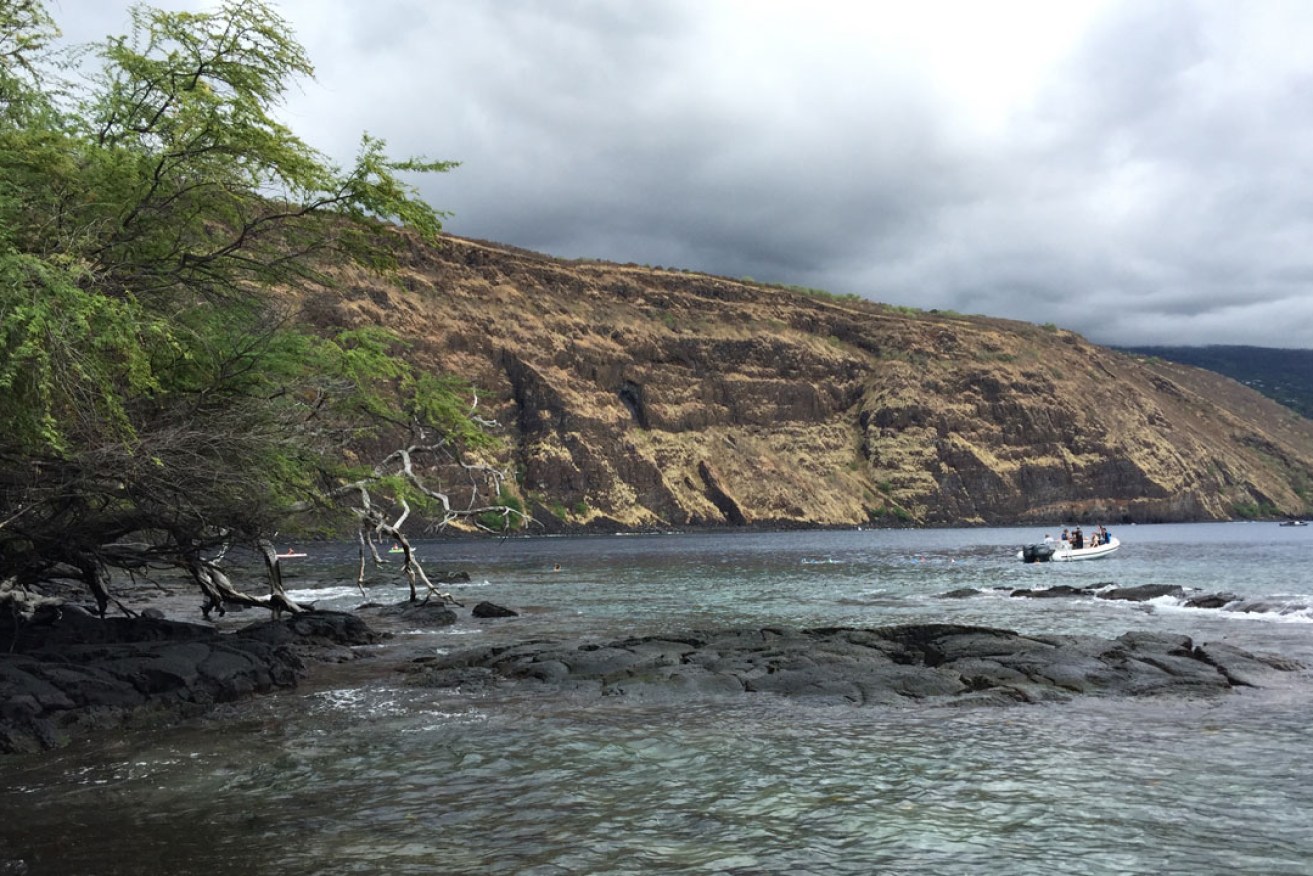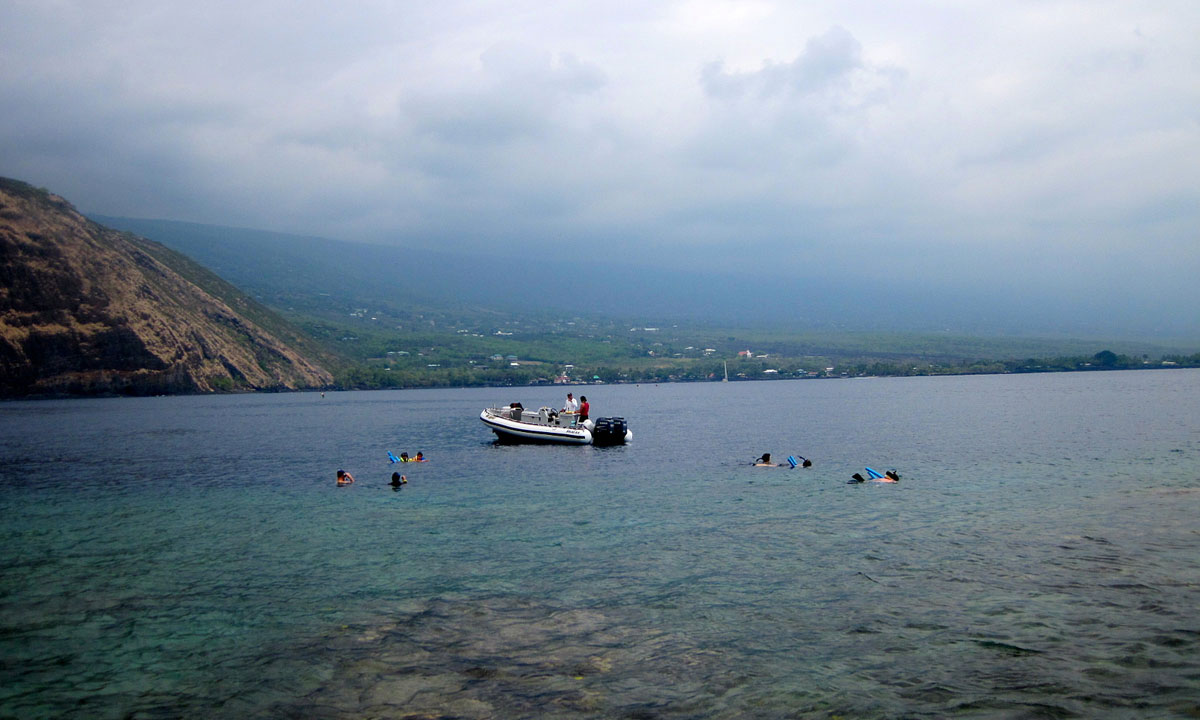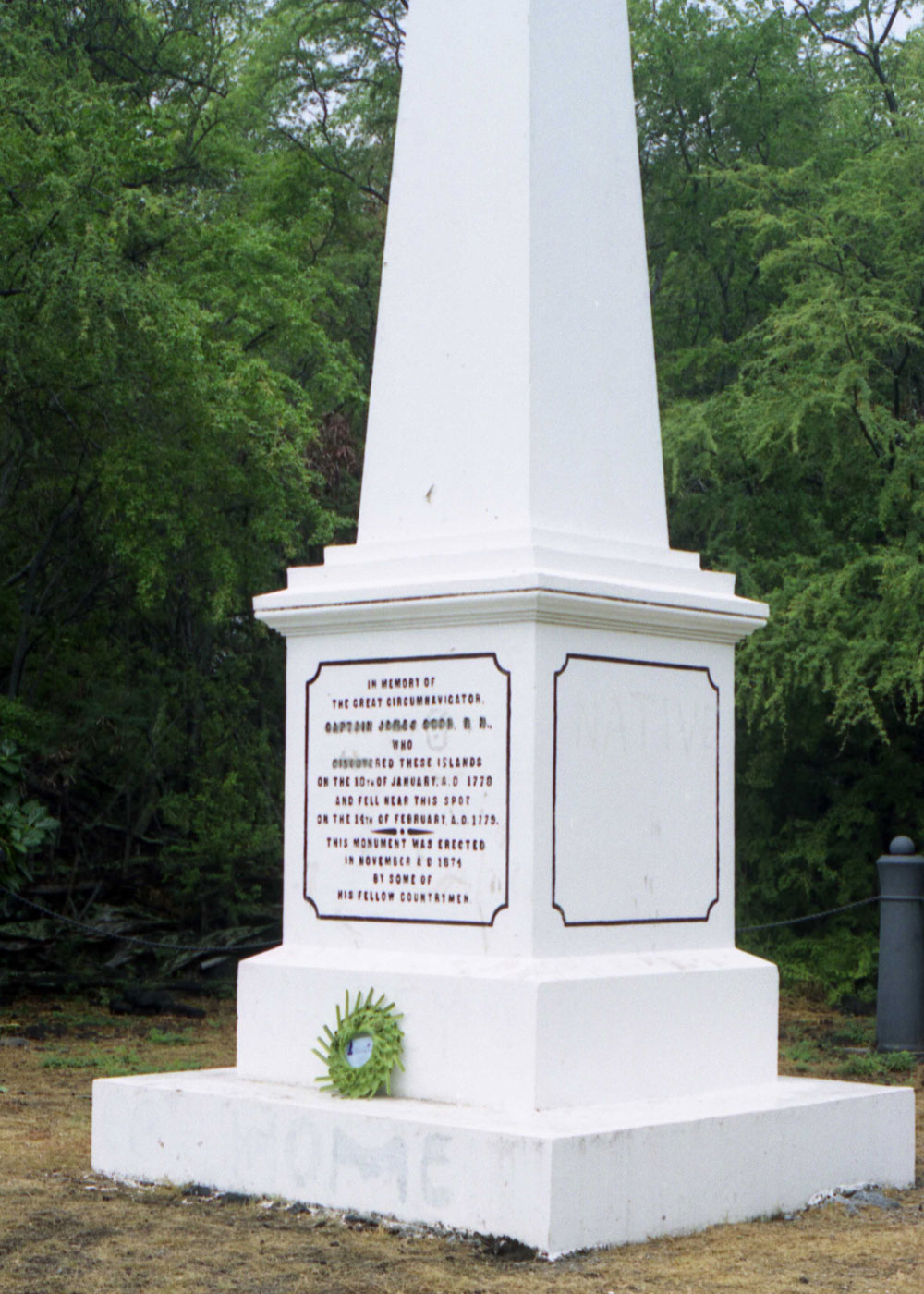Surviving Hawaii’s fatal shore
The spot where Captain James Cook was killed – Hawaii’s remote Kealakekua Bay – is accessible only by water or hiking. And when you get there, it feels a bit like you’re standing at the end of the world.

Kealakekua Bay. Photo: Michael Wayne / AAP
He was the greatest navigator of all time, and shaped the map of the modern world. I’m a travel writer who has pithily covered much of that map. Only one of us would leave Kealakekua Bay alive.
But my friend and I look like death as we shamble up to the counter at the seedy bar and grill on a searingly hot day on Hawaii’s Big Island.
“Whoa,” the waitress says. “You boys look like you need a drink!”
We’ve just returned from a hike to the spot where Captain James Cook was killed.
We’ve arrived during the Mahakili season (October to February), which heralds the coming of Lono, the god of fertility. When Cook arrived off the coast of Hawaii’s Big Island in January 1779, he was taken for the deity, and treated as such.
Much controversy surrounds Cook’s acceptance of the godlike status, and how much he used it to get what he wanted from the natives. Some scholars believe this led to his death.
In my time on the Big Island, I feel as though I’ve been treated in a similar fashion. I think back to the big smile I got from the woman at Pizza Hut, the waiving of my parking fee by the hotel, and the upgrade of my rental car from a sedan to a wagon at no extra charge.
Could I be the latest incarnation of Lono?
There are some parallels. Cook had the respect of his crew through years of firm captaincy. I have the respect of my hotel’s staff because I tip well. When you travel, you must pay for respect.
Cook had his motley crew, I’ve got mine: my friend Richard, who’s having last-minute reservations about the hike.
A sign posted at the start warns Lono wannabes and the unprepared to think twice about the trek, which takes around three hours all up. It’s a treacherous path, says the sign, and in hot weather could be very uncomfortable.
The hike begins in a mild fashion. Heat, long grass, rocks, heat. Strangely, there’s a lack of flies. Perhaps they can’t penetrate my divine aura.
It’s not long before we encounter exhausted hikers making their way back up the cliff. In my benevolence I hand out bottles of water. Their eyes seem to say “Praise be to Lono!” as they chug my gifts of life.
Kealakekua Bay is accessible only by water or by hiking. Perhaps some unspoken reverence for Cook has ensured the bay’s remoteness. Big Island isn’t a big beach destination – most of the beaches here are volcanic rock.
Once we emerge from the overgrowth, we’re greeted with a staggering view of the Pacific Ocean.
The vista makes me think how truly insane Cook’s journey would have been. To sail around the world in a wooden boat full of barely literate sea-dogs, tying knots every which way and eating little else but sauerkraut sounds today like a ridiculous proposition.
For Cook and his crew, it was life.
To either side of us are craggy ranges of cooled lava, providing an eerie, alien landscape. In fact, it’s so alien that suddenly it’s understandable how jarring the sight of a British sailing ship must have been for the natives back in 1779, as if through some divine intervention.
It’s about now that the path tilts downward toward the ocean. Far below is the village, from whence the natives emerged to greet Cook.
The village is silent when we arrive. It looks like the villagers have been gone a long time. Rocky walls are all that remain, amid thick tropical overgrowth.

Snorkellers explore the bay.
Here’s the truth about Kealakekua Bay: it isn’t one of the world’s great beaches, nor a particularly beautiful spot. It’s a totally inauspicious place for a man of Cook’s stature to have died.
Captain Cook’s downfall was that he became the guest who wouldn’t leave. Despite the reverence with which he was initially greeted, he overstayed his welcome, a move which angered the Hawaiians. Cook himself had become increasingly irate during his third trip around the world, and had come to the end of his rope during his time here.
An argument over a stolen cutter led him to take the Hawaiian chief hostage. Understandably, the chief’s subjects took exception.

The monument to Captain Cook.
A plaque in the water marks the spot of Cook’s death. Further on, there’s a tall white obelisk erected in the 1870s signifying the event. No mention is made of the marines and natives who were also killed in the scuffle.
In fact, no mention is made of the huge, abandoned village behind us. This unassuming patch of grass gets an explainer, and an entire civilisation is left a mystery.
The monument and grass around it is fenced off, signifying its status as British territory. Despite the man himself not being terribly interested in empire, empire was quick to claim his legacy as it did this land.
I don’t know what I was expecting from Kealakekua Bay – maybe a sense of majesty. Of history. The world’s fascination with exploring the unknown died with Cook – seafaring became a largely commercial venture after his death. In a way, I’m standing at the end of the world.
In fact, it’s a beach with no sand. Ratty cliffs spotted with holes containing the remains of Hawaiian royalty. A crumbling jetty with a sign proudly declaring its construction in 1970 by the Commonwealth of Australia.
Snorkellers are out in force today, exploring the bay into which Cook’s remains were dumped by his crew once they were returned by the Hawaiians.
The view displeases the mighty Lono. If you’re coming here, a man’s death is the reason. You could snorkel anywhere.
Since his death here in 1779, the mysterious Cook has become a polarising figure in world history. Was he an altruistic navigator concerned with shining a torch on parts of the world unknown to Europeans, as we were taught in school back in Australia?
Or was he a tool of empire, a conquistador obsessed with westernising the noble savages he found on distant shores?
Kealakekua Bay offers no answer. Neither does Richard: “Right, let’s go,” he says after 15 minutes.
Cook’s legacy is all over the Hawaiian islands. He was the first European to “discover” Hawaii, and despite their brutal rejoinder, he wasn’t the last. American domination may have changed a lot about these islands, but in a way, nothing’s changed.
Intruders are still greeted with friendliness until they’re deemed to have taken one too many liberties, even by American standards. The natives may have changed, but they’re no less defensive.
Time to get going before Lono season ends. I wouldn’t want to piss off the natives.
Getting there: Flights to Big Island’s Kona Airport all go via Honolulu, operated by Qantas, Hawaiian Airlines and Island Air. It’s a short flight between the islands, so don’t get comfortable. The entrance to the Kealakekua Bay hike is 30 minutes’ drive from Kailua-Kona; there’s no public transport. Kealakekua Bay is also accessible by kayak (info here).
Staying there: Accommodation is plentiful at Kona Beach, with the Courtyard King Kamehameha’s Kona Beach Hotel a standout. Visit konabeachhotel.com for details.
-AAP
The writer travelled at his own expense.




